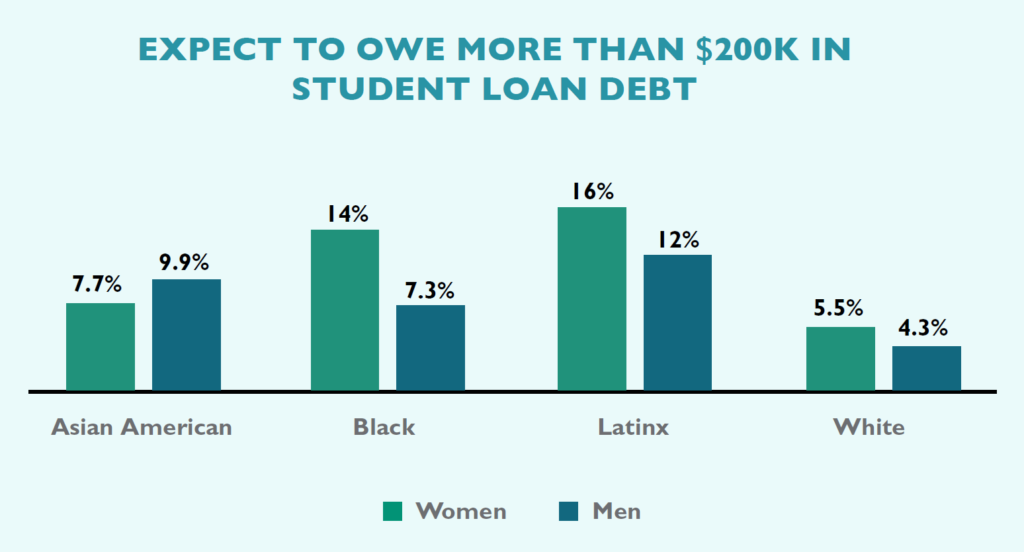 Student Debt is a raceXgender Issue
Student Debt is a raceXgender Issue
Meera E Deo, JD, PhD
Professor of Law, Southwestern Law School
Director, Law School Survey of Student Engagement
William H Neukom Chair in Diversity & Law, American Bar Foundation
Previous LSSSE publications have highlighted how the escalating costs of law school attendance have changed the landscape of legal education. Our 2020 Retrospective Report (which analyzed fifteen years of data) revealed that while in 2004, only 18% of LSSSE participants expected to owe over $100,000, by 2019 that number had skyrocketed to 39%. In 2015, LSSSE published an Annual Report stating that “the large racial and ethnic wealth disparities in the U.S. have broad implications on student debt trends,” with students of color carrying greater debt burdens than white classmates. More recently, in a publication entitled The Cost of Women’s Success, we found that women are more likely than men to borrow at the highest levels to earn a law degree—with 19% of women owing over $160,000 and 7.9% owing over $200,000 (compared to 14% and 5.5% of men, respectively).
Given the increasing costs of legal education overall, as well as ongoing gender disparities and racial/ethnic disparities, it should be no surprise that there are also marked raceXgender disparities. My previous research has introduced the concept of raceXgender bias, explaining “how the combination of these two particular identity characteristics create not just additive but compound effects in the personal and professional lives of women of color.” Applying that intersectional framework to the context of student debt, it becomes clear that we must think of increasing student loans as a raceXgender issue.
Not only do women as a whole carry greater debt burdens than men, but these gender disparities remain constant within every racial/ethnic group. In other words, women of color shoulder a disproportionate share of the debt burden in legal education. A full 16% of Latinas and 14% of Black women expect to graduate with more than $200,000 in student loans, compared to 12% of Latino men, 7.3% of Black men, and smaller percentages of those from other racial/ethnic groups. No Native American respondents expect to owe over $200,000 to complete their education; however, consistent with gender disparities in other racial/ethnic groups, a full 15% of Native American women carry over $160,000 in student loans, compared to just 7.1% of Native American men.

Legal education must address student loan disparities—not only as a racial justice issue, not only as a critical women’s issue, but also as an issue of raceXgender bias.
